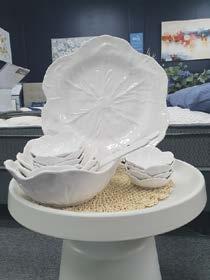






By Mary Anne Gill
Waipā rate payers are staring down the barrel of a 17 per cent increase next year.
Rents are also expected to rise across the district because of the increase.
The double-digit banger will be confirmed by the council on Guy Fawke’s Day November 5 when councillors will see the impact on specific properties – rural vs residential vs commercial.
The numbers will be included in the council’s Long Term Plan for consultation with the community from March and be implemented from July 1 next year.
The increase should not have come as a surprise, deputy chief executive Ken Morris told councillors.
Staff “really well socialised” the situation earlier this year indicating then the district was looking at double digit increases in the first three or four years of the Long Term Plan.
“This is really hard for us, super, super, super hard for us,” mayor Susan O’Regan told councillors at the end of a lengthy public workshop last week.
Staff threw them some sophisticated material in huge pieces of work in brief time frames which councillors had to turn around.
“Most of us are not financial experts so it makes it quite a challenge,” she said. She acknowledged councillors for the dedication they were showing and the challenges they would face in their own communities.

“We’ve stuck to our principles we set really early on in this, and I think it’s really important to be guided by your principles and your values and the strategy that has been set for decades around the way this district should look into the future.”
Earlier in the workshop deputy mayor Liz Stolwyk questioned O’Regan on how comfortable she was fronting a double digit increase.
“Nobody wants double digit, it’s pretty clear,” said O’Regan.
“I’m looking at ways it could be
Ngaroma’s Rachael Archer has risen to number two in the world in women’s enduro racing.
The Kawasaki rider was credited with a sensational display at the 2024 International Six Days Enduro which finished in Spain this week. Her team finished 10th overall in New Zealand’s first appearance at the event.
Archer, 22, has been a star since moving to the United States to compete when she was just 17. As a 20-year-old she wo the Women’s Cross Country class title in the US
• See Andy McGechan’s story, Page 9.
softened ever so softly.”
But that would not be an increase below 10 per cent because the figures showed that would not even produce a balanced budget.
“It’s not just the mayor, we’ve all got to feel comfortable. I’m only one vote around this table and I think we’ve all got to feel a level of comfort in a way that makes us jointly accountable for that decision because we’ve all had a hand in getting to here and so we’ve all got to have a hand in fronting the decision to chart a course out of here,” said O’Regan.
Chief executive Steph O’Sullivan reminded councillors the Long Term Plan process was very prescriptive and if they wanted to make any more serious cuts, it would have an impact on that.
Any further cuts would mean loss of jobs and reductions in services. Staff had produced a budget based on councillors’ directions last year not to reduce levels of service.
“If you direct us to do it, we’ll do it,” she said but legislative timeframes would make that
difficult now. In a media release sent out last week, O’Regan said economic headwinds meant Waipā was now facing “a bit of a tornado.”
Initial financial modelling showed council would need a 16.73 per cent average rates increase to make its budget work. This is despite $166.7 million of cuts being made to the proposed capital expenditure programme and a reduction of $26.9 million in operating expenditure projects over the Long Term Plan’s nine years.











By Mary Anne Gill
The Willie Nelson song describes Waipā District Council’s Ahu Ake road show best.
said.


all massages from 24 Oct

“Goin’ places that I’ve never been. Seein’ things that I may never see again. And I can’t wait to get on the road again.”
Drop in sessions to discuss Waipā’s 30year future growth document started at the Te Awamutu Library community meeting room on October 12 and wrap up in the Kihikihi Town Hall next week.
Hearing what whānau thought about the spatial plan’s five implementation packages – focusing on housing, transport, community spaces and the environment - was critical to her decisionmaking. Morgan is the Waipā Māori ward representative and her constituency covers the whole district.
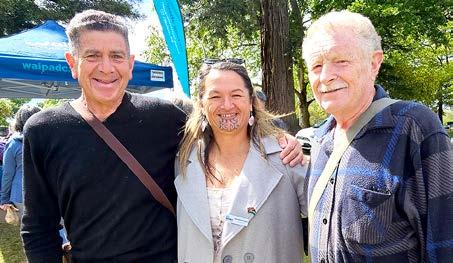












Cr Dale-Maree Morgan said she had been so busy with the roadshows, she would have to get reacquainted with her long-suffering husband but it was worth it, she
Stops in Pirongia, Te Pahū, Te Miro, Karāpiro, Ngāhinapōuri, Rukuhia and Ōhaupō have made for a busy time for staff and elected members, including new chief executive Steph O’Sullivan and mayor Susan O’Regan.












Strategy group manager Kirsty Downey,
who led the project, told The News at the Cambridge Farmers’ Market on Saturday – the most successful event thus far - she was about to head off to Karāpiro for the afternoon but might give herself a day off next week to tidy up the house.
The plan has developed five implementation packages of activities which would be delivered progressively in stages and consider the district’s financial constraints. Feedback is open until November 4.












This week I am again prompted to remind you about Facebook fraud. Facebook Marketplace is an unregulated trading platform. While a lot of legitimate people use it, there are equally those recidivist fraudsters who use it purely to exploit victims for cash.
News/Editorial
Roy Pilott editor@goodlocal.nz
027 450 0115
Mary Anne Gill maryanne@goodlocal.nz
021 705 213
Viv Posselt viv@goodlocal.nz
027 233 7686
Chris Gardner chris@goodlocal.nz
027 231 7007
Advertising Director
Janine Davy janine@goodlocal.nz
027 287 0005
Owner/Publisher
David Mackenzie david@goodlocal.nz
Office/Missed Deliveries
07 827 0005 admin@goodlocal.nz
Yes, I have mentioned this before, but we continue to get complaints resulting from those who are taken in by opportunists and lose money as a result, sometimes large amounts. These losses could have been avoided.
As always, I do not recommend ever making any large purchases involving online payment through Facebook marketplace, sight unseen. If you cannot meet the seller in person to check the item exists and is as described before making payment in cash or online, you are choosing to expose yourself to financial risk.
Fraudsters will often post a photo of an item online and thereafter effectively re-sell the same item repeatedly defrauding people. In most cases, they were never in actual physical possession of the item they were selling in the first place.
When communicating with sellers, look out for any inconsistencies in the language used in their messaging and location details. If it is an overseas fraudster, there may be spelling errors or use of phrases that are not
in common use in New Zealand. I would also question whether a legitimate overseas company would sell high value products via Facebook marketplace.
Fraudsters often create fake profiles to commit crime. Check the profile of the person you are dealing – when did they join Facebook, do they have many Facebook friends or follow any pages that indicate normal social media use? In short, do your due diligence.
When selling items on Facebook marketplace, be wary of overseas based purchasers giving odd stories about why they are buying an item in Cambridge. Do not give away too much information to sellers in advance.
For example, if you provide a purchaser with your home address for item pickup, and then tell them you can’t meet them at a certain day or time as you will be out or away, you are advertising an opportunity for burglary.
In reality, you simply do not know who is behind any Facebook profile - unless you know them personally - regardless of the name or photo they display.
Finally in the last seven days Cambridge Police have dealt with the following incidents: 12 reports of car crime, seven thefts (retail and other), three fraud matters, a wilful damage, seven family harm



Country music lover Paul Gough says he has had so much help from St John over the last seven years he wants to give something back. So the Te Awamutu man has planned an afternoon concert at Te Rahu Hall on the intersection of SH3 and Te Rahu Road. Funds from gold coin donations will go to St John from the noon to 3pm event on November 3.
Te Ara Rimu walking and cycling pathways in Kihikihi will be finished in December.
The current focus is on completing the Rolleston and Herbert St roundabout. Once done, Waipā council staff will close the remaining culde-sacs. Part of Whitmore St will be sealed with asphalt at the Church St intersection to address chip loss where vehicles have been turning, braking and accelerating.
An automatic number plate recognition camera has been installed at SH39, just south of Ngāhinapōuri but the camera at SH3 in Ōhaupō has been delayed until a new power connection is resolved.
Waipā council offices in Roche St will have seismic and renovation work completed by September next year. The work consists of seismic strengthening, reroofing and window replacement. Museum staff will move back to their old home from Rickit Rd when work is completed.
The old Sherwin Village Hall in Te Awamutu, which was not being used, will be transformed into two new pensioner units.
Fair celebration
Tamahere’s monthly country market celebrated its 20th anniversary last Saturday. The market, on the grounds of St Stephen’s church is organised by parishioner Jane Manson.
By Viv Posselt
It’s time to primp, preen and de-bug those rosesorganisers of next month’s 60th annual show put on by the Te Awamutu Rose Society are hoping for a turnout that befits their diamond jubilee.
The November 1-2 show, which will be held at the Te Awamutu Rugby Sports and Recreation Club for the second successive year, is gearing up to mark its significant anniversary in grand style.
With that in mind, organisers have introduced two new classes for firsttime exhibitors (adults and children), with a trophy for the first placegetter in each category as well as first, second and third prizes. Further adding to the celebratory theme is the call for anyone to enter the special Diamond Jubilee Pedestal Arrangement category.
A jubilee dinner for invited guests will be held on November 1.
Entry is open to any enthusiastic rose-grower,
be they award-winning or first-timers, and there is no need to be a member of the rose society.
There is no cost to entering, but those doing must pick up a schedule beforehand containing details on the exhibit classes and categories. They are available online, or from Te Awamutu i-Site and Mega Mitre 10 Te Awamutu.
As with previous shows, all public entries need to be with exhibition organisers at the venue between 4pm and 6pm on the evening before the show – Thursday, October 31.
Te Awamutu Rose Society president and show manager Diana Jones said it was essential to have the blooms in then to allow time for set up and staging prior to the show opening the following day.
“Exhibitors can put in two entries each, and vases are supplied,” she said. “Judging will be done on the Friday morning and the show will open to the public from 1pm on that day. The presentation of trophies will be at 3pm on the Friday.”

Saturday show times for the public are 9am to 3pm. Jones said the inclusion of two new categories this year was intended to further boost public interest.
2023 Rose Society president Anne Oliedam said last year’s show, which attracted around 330 entries from around the region, was one of the biggest in recent years.
By Mary Anne Gill
Traffic data New Zealand Transport Agency (NZTA) is relying on to reject calls for new Waikato Expressway on off ramps near Cambridge Golf Club is several years old.
The modelling NZTA used three years ago for a detailed Cambridge to Piarere business case did not consider adding ramps, according to papers released to The News under the Official Information Act.
“On and off ramps at the intersection of Waikato Expressway and Tīrau Road are out of scope so there hasn’t been any need for NZTA to undertake any additional traffic modelling,” the roading agency told The News.
The business paper itself said
alterations were not evaluated, suggesting the data NZTA is relying on now, to reject calls from groups like Cambridge Chamber of Commerce, predate August 2013 when work started on the Cambridge extension of Waikato Expressway.
Traffic numbers are expected to increase significantly if RS Sand Ltd gets the go ahead to build a giant quarry on the southern outskirts of Cambridge. Estimates of up to 400 trucks a day through the town have mobilised chamber members and other businesses including neighbouring land holder Windsor Park Leasing.
The company’s agent Mark Chrisp of Mitchell Daysh Ltd said while it supported the quarry application, it wanted RS Sand to help fund on

off ramps in the absence of NZTA doing so.
SH1 ran through Cambridge and when work on the bypass started 11 years ago, NZTA said its construction would improve safety by significantly reducing through traffic and reduce traffic noise within the town.
Since its handover to Waipā District Council, traffic counts in Victoria and Hamilton roads at the St Andrew’s Church roundabout have increased dramatically due to housing and industrial growth throughout Cambridge and are now at or exceed the traffic levels when it was a state highway.
Taupō MP Louise Upston told The News NZTA had told her and Roading minister Simeon Brown that traffic volumes were insufficient
to justify the addition of on off ramps at Tīrau Rd.
The implication was the traffic data was new.
Cambridge Chamber of Commerce chief executive Kelly Bouzaid said her members were continually annoyed by NZTA’s rejection of the ramps.
“It is a strategic investment that not only addresses current traffic challenges, but also supports the town’s long-term growth, safety and sustainability,” she said.
It aligns with the council’s own spatial plan as it underpins all future planning, identifies opportunities for growth and investment and helps businesses know where and how to invest.
• See: No change on the interchange, page 10.
We believe that each funeral service should be as unique as the life you are celebrating. When a funeral is personalised, it creates a special space for sharing precious memories, telling stories, and simply being together with friends and family.
Rosetown Funeral Home are dedicated to providing personalised and meaningful funeral services, and are happy to discuss new ideas, pre-planning and/or pre-paying for your funeral. We are here for you in your time of need, so please get in touch anytime to discuss your options.





Traci Houpapa won the Māori governance leader award at the Aotearoa Māori Business Leaders Awards in Auckland last night.
Houpapa, who grew up on a King Country sheep and beef farm, is Ngāti Maniapoto, Waikato, Taranaki and Ngāti Tūwharetoa through her father and German Yugoslav through her mother.
She won the award for her extensive leadership in business and governance and shaping the Māori business landscape.
The event was hosted by the University of Auckland Business School and celebrated the contributions of Māori entrepreneurs, leaders and organisations.
Houpapa worked as a tour guide on the Whanganui River, a rousey in a shearing gang, a lab technician, a social worker and on a project setting up kohanga reo centres around the North Island.
In recent times she has been a board member of the Chiefs rugby team and was appointed a Member of the New Order of Merit for services to business and Māori in 2012.
Five other awards were presented at the event.
Vanessa Hayes, founder of kaupapa Māori business Torere Macadamias on the East Coast, won the Entrepreneurial Māori Business Leader award.
Moana New Zealand won the Kaitiaki Business Leader award for their dedication to sustainable


Traci Houpapa
fisheries management. The seafood company is a 100 percent iwi-owned organisation with a deep sense of responsibility and respect for New Zealand’s fisheries.
Māori Women’s Development Inc, a charitable trust formed, managed and operated by Māori women, earned the Mānuka Henare award for its continued support of Māori women in business, offering loans and wrap-around support.
The Outstanding Māori Business Leader award went to Harry Burkhardt, co-founder and managing director of Replas Ltd, an innovative company transforming waste plastic into valuable products.
The Dame Mira Szászy Alumni Award went to Karleen Everitt, a University of Auckland Business School graduate who has had a stellar career and is currently leading Te Ao Māori Strategy at ANZ Bank.
Teams from across the country converged on Te Awamutu on Tuesday for the start of Annual Connection 2024 – an event showcasing highly specialised electricity supply skills.
Te Kūiti based The Lines Company went into the competition as reigning champions, and their neighbours Waipā Networks were out to take their title.
At stake is over the three day competition which finishes today is the overall line mechanic championship plus three category awards.
The competition brings together cable jointers and line mechanic teams from
energy companies around the country. Activities test specialist skills and experience.
Ahead of the event Lines Company chief executive Mike Fox said the event was a rare opportunity for everyone in the industry to be in the same place at the same time.
There was a lot to discuss, including a looming shortage of skilled workers, he said.
It’s estimated the industry will need twice as many people over the next few years as the country seeks to harness renewable energy and electrify key infrastructure,

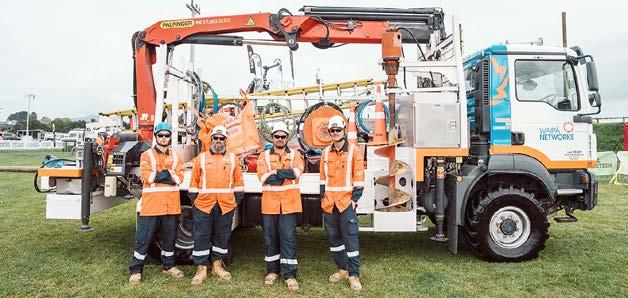
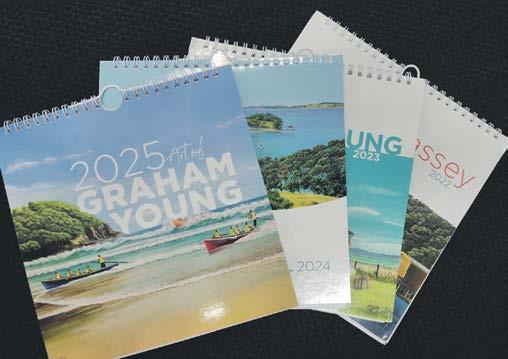
Get a green light on your sexual health! Book to see our women’s health GPs, midwife, or specialised nurses, for any of the following and more. Appointments are 30 minutes long, available until 5.30pm.
You do not need to be a registered patient with us to attend this clinic. Many services are subsidised, so the cost is reduced for most patients.
Contraception:
• Emergency
• Long acting reversible IUDs, jadelles
• Depo injection
• Pills, condoms
Pregnancy testing, antenatal advice, postnatal checks
Early pregnancy assessment







STI checks for all genders
‘Well woman’ checks - comprehensive check-up and screening service to optimise women’s health Abortion care and support
By Janine Krippner
Today is our national ShakeOut earthquake drill and tsunami hikoi, a great chance to think about what to do during an earthquake and why. I feel that knowing why it is important to do something always makes it stick in my head, especially if it comes with imagery that makes me physically cringe like having glass in your feet.
A friend and social scientist, Dr Sara McBride, has investigated global earthquake data to understand how people get hurt. The research shows that moving during shaking increases your chance of getting injured. If getting injured isn’t a thought that concerns you, remember that you may not be able to get to medical help and it could hamper priorities like helping friends or family. An injury could really add to an already stressful situation.
Images of collapsed buildings may cause some apprehension, but keep in mind that context matters.
While poorly built buildings may collapse, we have pretty good building and earthquake safety standards here in Aotearoa and they have been improving.
You also may not be able to get out if you try. It turns out it’s hard to walk or run when the ground is moving.
Tripping during shaking is common, and in some cases a large portion of injuries were to people moving out of and away from buildings. Remember the images of fallen bricks after the Christchurch earthquakes? Unfortunately, old advice is hard to get rid of.
Do not stand in a doorway during an earthquake – this does not protect you from falling objects. Doorways are no stronger
than other parts of the house, they are not structural supports.
This outdated belief is based on older buildings in different times. You can throw this one out for good. If you are close enough to a desk or table, get below that. If you’re not – drop, cover your head, and stay put until the shaking starts.

By Murray Smith, Bridges Church
I live by a Cambridge green-belt reserve where my favourite birds, native wood pigeon (the kererū), frequently visit.
Recently an unusually large flock of eight was frolicking high up in the trees. Unexpectedly a group of them, as inquisitive about me as I was with them, broke away from the others. A beautiful quartet of kererū flip-flopped down through the trees to fly noisily just above my head - the characteristic clumsy kerfuffle of their beating wings so close, it stirred up a breeze to gently slap my face.

Back to cringing – cut feet from glass, including mirrors, is one of the most common injuries. It’s good to have some shoes near your bed to protect your feet, and another reason to stay in bed instead of jumping out. Can you imagine trying to walk to medical care with cut feet or imbedded glass? Please take care of your important body parts. Emergency Manager Brian Terbush points out that “If you sleep eight hours a night, that’s a 33 per cent chance you’ll be in bed when one occurs”.
Living with a child last year we frequently had a chat about what to do if there was an earthquake at night. The plan was to cover her head with a pillow and wait for the shaking to stop for Mum and Dad to come to her. I understand the need to get to a scared, screaming child is strong, having these conversations might help.
Take a moment to check out the getready website, where there is more advice on what to do if you’re in a car or wheelchair, or if you use a cane or walker. They have posters you can print in English and te reo Māori. The more we normalise what to do and make it common knowledge, the more we can be prepared to get through these scary events together.
The CPI outcome for the year to September 30 was a good one.
The increase of 2.2 per cent was at the lower end of most economists’ expectations. It was also the first time since 2021 that the outcome was within the Reserve Bank’s target range1-3 per cent. The bank had anticipated this outcome and had lowered the Official Cash Rate (OCR) by 50 basis points in the week before the September CPI announcement, which took the OCR to 4.75%.
The good news on inflation was greeted with both relief and celebration. The relief was understandable. But some of the celebration was a bit over-enthusiastic. One newspaper column I read opened by saying ‘inflation in NZ is now officially dead’.
You only need to take a cursory look over history to realise that inflation never dies. It








An ‘up close’ encounter with kererū makes it abundantly clear just how large these birds are! They can measure over half a metre from tail to beak. Their full bodied physique with shimmering green and iridescent purple-bronze feathers contrasts with spotless white feather vests… bright red feet, red beaks tapering to orange, plus piercing inquisitive red eyes, complete a stunning ensemble!
These beautiful birds warrant appreciation and mindfulness, given that their numbers, while considered somewhat stable, are declining in places. If loss of habitat through forestry remains unchecked along with predators and illegal hunting, kererū will be dangerously exposed. Rats, stoats, cats and possums eat their eggs and nestlings; stoats and cats will even attack and kill adult kererū.
Extinction is a sad outcome for any species and proper stewardship will play a part in helping kererū continue their vital role in our eco-system.
Kererū, together with Chatham Island cousins, the native parea pigeon, are the only two bird species big enough to swallow large fruit, such as those of karaka, miro, tawa and taraire, and disperse seeds over long distances, thus ensuring regeneration of our native forests. The synergy and intentionality of creation, its order and detailed design is fascinating.
By Peter Nicholl
does sometimes go into hibernation and the hibernation periods can last several years. But just like hibernating animals, when conditions become suitable, it can easily spring back to life again.
The current battle against inflation is almost won. But fighting inflation Is not a single battle, it is an on-going war. Central Banks made huge mistakes with their excessively easy monetary policies of very low interest rates and huge liquidity injections. They were the ones that largely caused the inflation battle they have all been fighting over the last few years. What Central Banks do now that inflation is back within their target ranges will be critical for making sure that inflation stays in hibernation.
Interest rates in New Zealand are clearly on the way down. The fact that bank mortgage


rate yield curves are still inverse (3 and 4-year fixed interest rates are lower than six month and one year rates) indicates that banks – and their customers – expect them to continue to fall. After the announcement that the annual CPI rate was 2.2%, some people started calling for the Reserve Bank to accelerate the downward path by moving their OCR down by 75 basis points when they make their next OCR decision on 27 November.
In my view, that would be a mistake. The bank should stick to moving the OCR down by 50 basis points in November. I said earlier in the column that the current battle against inflation is ‘almost won’. The ‘almost’ caveat applies especially to New Zealand. Most of the downward move in our inflation rate from 3.3 per cent in the year to June to 2.2 per cent in the year to September was due to events elsewhere

Along with millions of others, I’ve appreciated British naturalist and filmmaker David Attenborough’s commentaries and stunning footage, as he gushes enthusiastically about creation’s marvels. I’ve also marvelled that his observations have not led him to conclude that there must be a Creator. No such acknowledgement has been forthcoming, leaving his commendable celebration of nature incomplete.
I say this for two reasons; firstly, because everything cannot come from nothing. A painting demands crediting an artist, design reveals a designer, buildings need architects, engineers and construction crew- nothing randomly occurs nor is order sustained without purposeful intention behind it. Secondly, as it’s succinctly put in the Bible, “God’s invisible attributes, namely, His eternal power and divine nature, can be clearly perceived, since the creation of the world in the things that have been made, leaves people without excuse.”
Attenborough claims to be an agnostic, not an atheist. Whereas an atheist claims emphatically that there is no God, an agnostic takes a less aggressive stance claiming that on the basis of ‘lack of evidence’, you cannot prove God exists. That an intelligent person so enamoured with nature’s wonders vacillates over God’s existence due to ‘insufficient evidence’, astounds me.
“Checking in our brains” at the door is not a pre-cursor to believing. Clearly the very intelligent have no advantage in encountering God.
Faith is needed… though with copious evidence on hand, it’s far from a leap in the dark.

in the world. Tradeable inflation, which measures price changes in goods and services that are influenced by foreign markets, was actually negative. It fell by 1.6 per cent in the year to September. Non-tradeable inflation, which is the inflation we are producing within NZ, is coming down but it is coming down slowly and it is still high. It was 5.8 per cent in the year to March, 5.4 per cent in the year to June and was still at 4.9 per cent in the year to September. This should worry the Reserve Bank. It should result in them not accelerating the pace of monetary easing in November. Inflation in New Zealand is certainly not dead. It hasn’t even yet gone into hibernation in New Zealand.

























Since it opened 40 years ago, McKenzie Centre has been dedicated to supporting children with disabilities and help children achieve short and long-term success.
Over the decades, thousands of children from throughout Waikato and the King Country - along with their families - have benefitted from the centre’s early intervention approach.
This is the term used to describe the services and supports that are available to babies and young children with developmental delays and disabilities.
Different types of specialists work with children and their families depending on which skills are delayed.
Service manager Suzanne Kok highlights the team’s skill, experience and passion for early childhood development.
“Despite evolving service delivery models, the centre’s mission remains unchanged since its opening in 1984,” she says.
Before it opened, representatives from the Child Development Centre at Waikato Hospital, the Society for the Intellectually Handicapped, Hamilton West

School and the Hamilton Children’s Trust spent three years developing its goals and laying the centre’s foundation.
“Their vision was to offer a coordinated, transdisciplinary programme of specialised care, intervention, and education for children with disabilities from birth, with working in partnership with parents being crucial to its success,” says Kok.
The centre’s goal today is to help whānau identify their priorities
for support and learning for their child, their family and themselves.
Children can be referred to the centre by parents, family, or friends.
It supports children and whānau within a 50 kilometre radius of its Hamilton base.
“The team collaborates with families to enhance children’s interaction and play skills, communication, understanding, expressive language, learning, emotional regulation, sensory
awareness and social skills.”
Even after children leave the centre to go to school, the team maintains connections with them.
“The children that come through McKenzie Centre are part of our whānau,” says Suzanne.
“We don’t forget them, and we love seeing them when they come back for a visit.”
To mark its 40th anniversary, McKenzie Centre is hosting a celebration on November 2, at Hamilton West School grounds.











• Letters should not exceed 250 words
• They should be opinion based on facts or current events
• All letters to be emailed to editor@goodlocal.nz
• No noms-de-plume
• Letters will be published with names
• Please include full name, address and contact details for our records only
• Letters may be edited, abridged, or rejected at the editor’s discretion
• The editor’s decision on publication is final.

Meet Dr Bernard





By Viv Posselt
Dutch-born artist Lea Woutersen’s home studio just outside Cambridge is the epitome of cool.
It’s light and airy, crafted by her husband using wood reclaimed from their farming days, and stands not far from their imposing log home that could easily belong in the Canadian wilderness.
It’s in the little white studio that Lea works, and it is from there that she will exhibit her work as one of 13 artists on the upcoming Passion for Art Trail being held alongside next month’s 2024 Rotary Cambridge Garden Festival.
The November 9-10 art trail has been organised by Carole Hughes, who will exhibit her fauve art paintings throughout that weekend. The event offers enthusiasts an opportunity to visit local artists, including painters, printmakers, ceramic artists and sculptors, and explore two local galleries.
Hughes said the art





exhibition is always popular, and because of its link with the Garden Festival, it attracts many out-of-towners keen to make a weekend of it.
“Cambridge Rotary gives us a great opportunity to show our studios … they are very supportive of our local artists,” she said.
Lea Woutersen and her family have been in New Zealand since 1990. Her interest in art grew from the few drawings she did as a youngster in Holland to the eclectic range of styles she explores and exhibits today.
“I like to try a lot of new things … I find that much more interesting, more fun than settling into just one
style,” she said. She paints in oils and acrylics, draws in charcoal, makes unusual figurines, does encaustic (hot wax) art and creates sculptures from gourds she grows in the garden then dries on her deck.
The Passion for Art Trail runs across both November 9 and 10, while the Rotary Cambridge Garden Festival runs only on the Sunday, November 10.
Cambridge Rotary Club president Gary Smith – who is delighted the festival is back during his tenure – said last week that ticket sales were humming.
“We’ve sold around 900
but would like to sell some 300 more if possible. All festival proceeds go to our three recipient charities – Kids in Need Waikato, Interlock NZ Trust, and Cambridge Lifeskills,” he said.
“This is something that supports our local community, with a focus on our young people.
“We have 11 great gardens featured this year, many of them new to fans of previous garden festivals. There will also be stalls selling plants, and opportunities to have a coffee at some places, including at our ‘hub’ for the day at Cambridge Raceway.”




By Meghan Hawkes
The poisoned thumb of Ohaupo boot maker Josef Sittauer (pictured right) was said to have led to the amputation of his hand, reported a Waikato Argus correspondent in 1902.
The news brought an outpouring of sympathy and a collection of donations for the man and his wife and eleven dependents.
Josef Sittauer had been born in Bohemia (now Czech Republic) in 1846. In November 1875 he, his wife Margaretha (née Schischka) and their two small sons, Wenzl and Josef, departed Bohemia for Hamburg as part of the fourth group of Bohemian settlers to New Zealand. They sailed from the Port of Altona on the Shakespeare in 1875, arriving in Wellington under quarantine in January 1876. In early February they boarded the coastal freighter Ladybird, which was headed for “the north”.
Josef and his family settled at 100 Great South Road, Ōhaupō in a whare on the property of Margaretha’s sister Barbara and her husband Michael Krippner. Josef, although a boot maker by trade, began working as a farmer and beekeeper. Within months of their arrival Margaretha had died from typhoid. Wenzl and Josef junior were cared for by their Aunt Barbara and cousin Anna until March 1878 when Josef placed them in the care of Destitute Children’s Home in Auckland for three months.
By May 1879 Josef had purchased three acres of land at 169 Great South Road where he built his own home and boot making shed. Two months later he married Helena Mary Stancliffe of Auckland. Helena became mother to Wenzl and Josef junior, the family eventually growing to 13 with Josef and Helena having 11 children. Josef moved his boot making business into Ōhaupō township, and in 1881 he was naturalised.

Wenzl (who became known as Vincent ) and Josef junior attended Ōhaupō School but they struggled due to poor English skills. As was customary in those days, when sons were aged 12, they began working, the oldest following the father’s trade. It is presumed Wenzl began boot making however tragedy struck in December 1885 when Wenzl, 13, died of tetanus. Josef junior then aged 11–12, probably replaced Wenzl in boot making. In February 1902, 15-yearold Peter drowned in Horseshoe Lake.
Two months later the alleged amputation of Josef senior’s hand was announced by the Waikato Argus. This was followed two months later by another report stating Josef was back at work – advertising his thanks for past favours and promising footwear ‘repairs neatly done and prices reasonable.’
One hundred and twenty two years later, Josef senior’s great granddaughter, Mary Sittauer, dubious of this report, pointed out that it did not seem credible that two months after an amputation a person would be capable of operating machinery which required precision to manufacture and repair footwear. Full prosthetic

hands were not in use at that time and there was no oral history or family knowledge of the accident or amputation. Archival hospital records did not exist. Finally, a family photo emerged of Josef senior taken c1923–26, conclusively showing that he had two hands prior to his death in 1926.
The only other solution to the puzzle was that it was Josef junior who lost his hand and through some mish mash of family information the report transposed the event onto Josef senior. There is no family knowledge of Josef junior, his life, and whereabouts nor are there any photos of him.
Of Josef senior’s other sons –in the early 1890s, John Thomas began work farming, beekeeping and boot making. Disenchanted with his wages being taken to help educate his sisters at St Mary’s in Hamilton East he moved to the Hutt Valley, marrying at 21 in 1901, and starting his own boot making business. Martin left for Auckland some time after Peter’s drowning and was still in Auckland 1907.
It is possible that Josef junior and Martin went to relatives in Bohemia - Martin is known to have been in Hamburg in 1908 but from then onwards, nothing is known. Vincent Daniel became a blacksmith, Frank a butcher, Matt a farmer, and Lawrie a bootmaker later joining Vince in his blacksmith business.
Vince and Matt began the Sittauer Road dairy farm in 1925 where Lawrie assisted. Carl also had been a farmer prior to WW 1 but died at Gallipoli in 1915.
Ōhaupō’s Sittauer family’s contribution to the district was significant, now brought to light again in righting a reporting error from the pages of the past.
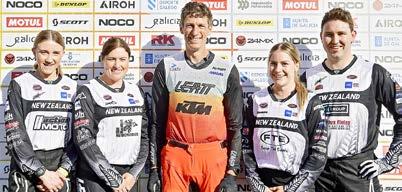
By Andy McGechan
New Zealand made its debut appearance this season at the women’s section of the International Six Days Enduro, held in Spain, and impressed many at this huge gathering of the motorcycling world elite.
The three-rider New Zealand women’s contingent that battled in the Women’s World Trophy (WWT) teams’ class – Ngaroma’s Rachael Archer (Kawasaki) joined by Tapanui’s Kylie Dorr (Beta) and Opunake’s Taylar Rampton (Husqvarna) – managed a few jawdropping results on their way to finishing 10th overall in their first appearance at this massive annual dirt-biking marathon. Archer was the stand-out for the New Zealanders. She finished overall runner-up among the women, just under three minutes behind United States team rider Brandy Richards after an incredible six days of brutal racing in the Galicia region, on the Atlantic coastline in the north-western of Spain.
Archer managed to tap into any left-over reserves of energy to significantly cut her deficit to Richards on the final day, which featured a motocross, an aspect of off-road motorcycle racing that is considered faster but arguably less technical.
The rider who finished the enduro third overall in the women’s rankings was Australia’s
It’s the old adage – strength in numbers always beats doing it on your own and that has proven true for the self-formed Waikato Diabetes Community Team.
The four members of the team are from three primary health
organisations (PHO) and the Waikato Regional Diabetes service.
Pinnacle Midlands Health Network’s Kathy Knight says the team has achieved so much more together in improving care for people living with type

two diabetes, who are primarily managed in the community.
“Collaboration has also enabled us to support each other clinically and professionally,” she says.
There are approximately 27,000 people with type two diabetes in the greater Waikato and the team’s goal is to build capacity in primary care so that whānau receive the best evidence based care regardless of the provider they access.
They identified barriers to optimal diabetes care which included reduced co-ordination and variation in care between practices. Lack of specialist expertise and evidence-based updates were also identified.
Through the support to practices that the team – which comprised a nurse, pharmacist, dietitian and endocrinologist – has provided,
the average HbA1c of 47 per cent of people living with type two diabetes in the Waikato is now under 53mmol/mol.
HbA1c is the measure used to measure for and monitor diabetes. Glucose in the blood sticks to the haemoglobin molecules (Hb), and the higher the glucose, the more sticks.
As haemoglobin is broken down and recycled every three months, the HbA1c is an accurate measure of the average blood glucose in a three-month window.
The target for most people with diabetes is an HbA1c under 53mmo/mol.
“We had weekly meetings and developed real-time diabetes dashboards in each primary health organisation, so we are all collecting the same data.
Jessica Gardiner, ending the event just a little under five minutes behind the hard-charging Archer. Archer was not only overall runner-up in the individual standings for the women, but also she wound up an astonishing 54th overall (when ranked alongside the men. More than 570 riders in total were at the event.
“It felt good to win a special test (a tightly timed sprint section) at this event,” said Archer. “I felt like I rode decent and didn’t crash, so put in a solid ride.
“I didn’t really set any goals or expectations for myself coming into the week. I just wanted to learn and gain as much experience as I could. I feel like I’ve done that and also shown some speed.”
Dorr was meanwhile classified 28th individual in the WWT class (and also finished 129th overall alongside the men). Rampton dropped out after day five with an injury, but was still credited with finishing 30th overall among the women.
“New Zealand team manager Justin Stevenson said it was “not the dream result for Team New Zealand - but close”.
Team France won the premier World Trophy (WT) class ahead of the United States and Spain. In the Junior World Trophy (JWT) class, Team Sweden won ahead of France and the United States.
There was no Kiwi men’s team entered this season.
“We have facilitated comprehensive common form updates and provided clear and consistent messaging to all practices, and every practice has a copy of the team’s diabetes manual, regardless of who their PHO is,” says Kathy. They ran basic and advanced diabetes education days, bimonthly online updates via Zoom, consistent messaging on pharmacy-dispensed medication and established a New Zealand Society for the Study of Diabetes advised diabetes management course through Waikato University.
“We’ve still got a lot of work to do but our aim was to show how our collaborative model of care and strong relationships could address the barriers and improve the lives of our diabetes whānau,” she says.
By Mary Anne Gill
On-off ramps at the southern end of the Cambridge section of Waikato Expressway have again been ruled out by New Zealand Transport Agency.
The traffic volumes are insufficient to justify building them, Taupō MP
Louise Upston told her Friendly Forum in the Town Hall on Friday.
“NZTA tells me the expressway was not intended for local traffic, it was intended as an expressway,” she told The News afterwards.
The Victoria Rd interchange was designed for northbound and southbound connections to Cambridge and there were no plans to provide additional access points.
Upston had earlier met Waipā mayor Susan O’Regan and chief executive Steph O’Sullivan for their regular update and passed on NZTA’s feedback.
“It was great to meet the new CEO, I have known her for years and she is an exciting addition to the council team.”
The issue of a third Waikato River crossing also came up with “many wanting it yesterday,” said Upston.
As soon as she has further traffic data, she was “happy to advocate” with NZTA but the timeframe was shortening as it was not a fast track project.
Roads continue to feature at Upston’s forums. Southern Links – a network of state highway and urban arterial routes weaving its way from Hamilton via 21km of state highway, three new bridges and 11kms of urban arterial roads – to Tamahere is on the list of 19 Waikato fast tracked projects.
“It will make a big difference to Waipā,” she said.
The Cambridge to Piarere four-laning was another of the 19 but the two projects would have different funding and finance models. Third party or tolling is likely to feature in Southern Links.
The News also asked about the proposed quarry at Newcombe Rd and the impact on Cambridge
with the increase of trucks through town.
Upston said it was up to Waipā district and Waikato regional councils to make the decision, but the reality was with big infrastructure projects, there was a need for sand.
A plan to establish a new medical school at Waikato University had also passed the next stage since her last Friendly Forum in Cambridge.
It is a proposal Upston has always supported. She had terse words for Auckland and Otago universities who continue to oppose the Waikato proposal.
“I’ve explained it lots of times, it is not the same as Auckland and Otago currently offer.
“This is post graduate, a rural medicine model that is common in Australia and is about supporting provincial and rural New Zealand with our health workforce.
“I don’t think it’s good enough for Auckland and Otago to say they can deliver the health workforce because they haven’t.”
In addition to her roles as minister for the Community

and Voluntary Sector, Social Development and Employment and Child Poverty Reduction, Upston recently took on Disability Issues.
Two months ago, she took immediate action to stabilise the disability support system after an independent review found the Ministry of Disabled People was
ill-prepared to deliver the services.
The taskforce released its first newsletter last week.
“It’s challenging, we’re working on it at pace.
“I see there is a massive need to ensure greater access to services, a much fairer system that doesn’t have significant disparity based on where you live. We want
to make sure the $1.1 billion of funding goes to where it’s needed the most. It is about investing earlier for better outcomes,” said Upston.
The MP, who was first elected in 2008, holds regular friendly forums throughout her Taupō electorate which takes in Taupō, Tūrangi, Tokoroa, Putāruru, Tīrau and Cambridge.



























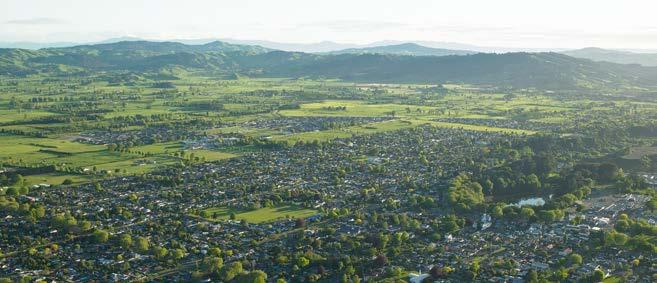
Delivering value, staying focused on the big picture and ensuring a fair and equitable approach to funding – that’s the overall financial strategy for Waipā District Council as it works to develop its nine-year Long Term Plan.
The district’s increasing popularity as a great place to live is coming at a cost – financial modelling shows a double-digit average rates increase is going to be needed for the Council to make its budget work in the next financial year.
Mayor Susan O’Regan said the Council is caught amid a perfect storm of rapid growth, high inflation, high interest rates, the lingering effects of the Covid-19 pandemic, and the global economic downturn.
“Nobody wants a double-digit rates increase, but we also have to be honest about the actual cost of what we provide to our communities.
“What we are seeing is symptomatic of being a tier one growth council. Not only do people want to come and live in our communities, we are required by the Government to plan for the future, and that is really impacting our business,” O’Regan said.
Initial modelling shows a 16.73 per cent average rates increase will be needed in the next financial year, taking into account the expected level of growth in
the rating database, and the need to plan for further growth. About 62 per cent of the forecast debt level is growth related.
“I am confident that we are looking very hard at all of our expenditure not just in the current year but across the next nine years and we will continue to do so,” O’Regan said. “We are doing all we can to try and reduce the impact on our ratepayers, and the wider community, because we are acutely aware of the cost of living challenges some people are facing.”
Elected members were asked at a recent workshop to provide direction on the financial strategy for the draft Long Term Plan, which is due for adoption next June.
“As elected members, we have all had a hand in getting here, and now we have to have a hand in charting our course out of here,” O’Regan said. Further refinement of the plan will continue over the next few months. The community will have the chance to have their say on the draft Long Term Plan in March next year.



If your recycling day is a Monday, it will be collected as normal on Monday 28 October (Labour Day).
Remember to put your bins out before 7am, and place them as close to the kerb as possible with the Waipā logo facing the road. Don’t know what can be recycled? Try our simple ‘Can I recycle this’ tool on our website.
Tradies and DIY enthusiasts are being encouraged to give their used plaster buckets a second chance beyond the landfill.
Waipā District Council have partnered with Mitre 10 Mega Te Awamutu and Cambridge to set up a collection point at each store where the community can drop off used plaster buckets.
The initiative aims to reduce the number of buckets going to landfills all while giving back to the community.
Buckets collected will be transformed into portable fruit and vege gardens and donated back to the community.
Clean plaster buckets can be dropped to Te Awamutu and Cambridge Mitre 10 Mega.
Those interested in receiving a garden can express interest here:











Across 1. Custom (5)
4. Abrasion (6)
7. Choose (3) 8. Motto (6)
9. Hesitant (6)


10. Whale species (8)
12. In place of (L) (4)
13. Disposable handkerchief (6) 15. Attractive (6) 16. Stun (4)
Last week
17. Stance (8) 19. Debacle (6) 20. Crystal-clear (6) 22. Furrow (3) 23. Nervous (2,4) 24. Sailboat (5)
Delusion (13) 2. Criticise (colloq) (3)
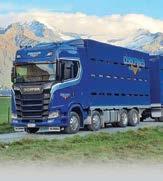


















Pacific island nation (5) 4. Conceited (5-2) 5. Strong,
Across: 1. Police, 4. Zephyr, 9. Algae, 10. Coconut, 11. Squeeze, 13. Yo-yo, 14. Malfunction, 17. Bill, 18. Audible, 21. Isolate, 22. Scent, 24. Duster, 25. Hot rod.
Down: 1. Praise, 2. Leg, 3. Crepe, 5. Encrypt, 6. Honeycomb, 7. Rite, 8. Screen saver, 12. Unanimous, 15. Foliage, 16. Heated, 19. Disco, 20. Bind, 23. Err.









REBSAURSOTIHGBEOLL QACNMWINYOURFZTMBA IGFRNLDEEQXNADRAWM NMRTKDTOPMEHVGTVKE YKGIWKMNPXXLUHEWSM QRLDTBCUAACFPFOTLG UOTYRGSURFOBEVGRES DFYDZNMATTITRRVADL HEZYXUSYBKJBMINPSE CMDHLBHREHQMWQIKSN ASCOODADSVEREISOAD MHTBOGYUUEFOQLRXSD ECFEPFPETALMPLXWRR TFILMFAUSOLPTLUUDS WEHPAOYVOYKQUOCXRI TDSRQCSWIPMOHRMZOG TPMEAZYFBASTOMJBWH BTNURABEGCLPOHZALX BATH BIKE BUNG CAME CURD DUAL FARM FERN FORK GARB GRIT HAZE HEMP LACY LAME LEND LIFT MATT MEET NEON PART PHEW POOL PUSH RAFT RAGE ROLL ROMP ROSE RUNT SHIFT SIGH SILK SLED SOME SOUL SURF THOU TIDY TOFU TOMB TRAP TUCK VIAL WARD WOOL WORD YOUR






































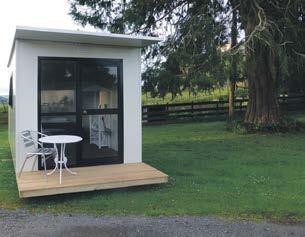






















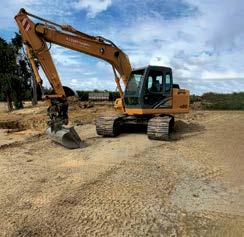










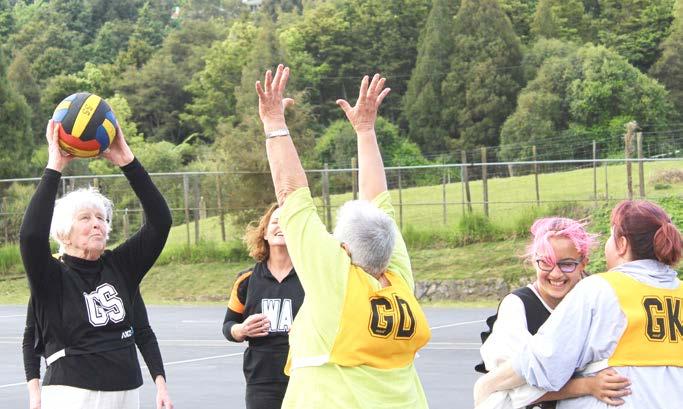
By Andy Campbell
Ōtorohanga netball was celebrating the century of netball in New Zealand on Friday, but unlike the parent body’s date 1924 beginning, Ōtorohanga netball’s origins are unknown.
“We lost our minutes in the ’58 flood,” Otorohanga netball president Dorothy Carr said.
They’ve since obtained some records from 1954, which may give the club a better look at its history, Dorothy said.
As its part in honouring 100 years of netball in New Zealand, the Ōtorohanga Netball Centre hosted a heartwarming celebration last Friday.
The event brought together past and present members of the Ōtorohanga netball community, giving everyone the opportunity to reminisce, reconnect, and celebrate the legacy of netball in their lives, Dorothy said.
Among the attendees were three families, each with three generations present — a testament to the enduring passion for the sport passed down through the years, she said.
A highlight of the afternoon was a game of walking netball, which
symbolised the inclusiveness and longevity of the game. Players ranged in age from 13 to 85, creating a powerful image of how netball continued to unite and engage players of all ages.
Celebrations moved to the Ōtorohanga Club in the evening, where four Service Awards were presented in recognition of significant contributions to the netball community. As part of the event, the Honours Boards, dating back to 1959, were unveiled, serving as a visual reminder of the people who have shaped and supported Ōtorohanga netball over the years.
“We have now got the honours boards up to date going back to 1958of all our patrons presidents, treasurers, umpires co-ordinators. So we have done a bit of mahe on that,” Dorothy said.
Some service awards were presented and next year they will start doing life memberships.
“You know how you have some of those things that you need to do every year and you kind of push that out because you are busy running competitions… this has just given us an
opportunity to tidy those things up.”
She said event was a powerful reminder of the deep sense of camaraderie and connection netball fosters in the community. It highlighted the role the sport plays in creating lasting memories, bringing whānau together, and building a bridge between the past and the future.
The timing of the celebration felt particularly poignant, as just two days later, the Silver Ferns secured a thrilling victory over Australia, a fitting capstone to a weekend of honouring netball’s proud legacy in New Zealand.
Netball was introduced to New Zealand as ‘women’s basketball’ in 1906 – a nine-a-side game played on grass, with baskets tied to posts at either end of the court.
It was introduced by Rev J C Jamieson who started up basketball teams from his bible classes. The first games were played on a paddock and the teams were nine-a-side. The rules allowed three bounces, and throws from one end of the field to the other. Baskets were used for goals and after each goal, the ball had to be tipped out to restart play.




AVAILABLE
Good to rolling contour. Well fenced and watered. Summer safe (eczema free). Experienced dairy support farmers for over 30 years. Have two blocks available. Come and visit us! Contact 027 487 7854 or 07 878 7703.



















Kaiāwhina/ Associate Teacher
Part-time (33 hours per week) Te Awamutu:
He tūranga e wātea ana ki te Kura o Ngā Purapura o Te Aroha. E kimi ana mātou i tētehi Kaiāwhina e mōhio ana ki ngā mahi whakaako tamariki mō te kura. Me matua mōhio hoki te kaitono ki ngā mahi whakahaere i te akomanga, me ngākaunui hoki ki ngā mahi whakaako tamariki. Me mōhio te kaitono ki te reo māori me ōna tikanga. He kura tēnei e hāpai nei i ngā wawata me ngā tumanako o ā mātou tamariki mokopuna. E whakapono ana mātou, he taonga te tamaiti, ko rātou hoki te pūtake o tā mātou kaupapa. Ka katia tēnei tono hei te 31 o Oketopa,2024. Tukua rānei tō Tātai Oranga ki te Kaiwhakahaere: tari@npota.school.nz
Attention: Te Wharekura o Ngā Purapura o Te Aroha. Enquiries (07) 871 4844

2004 XTrail Nissan – good condition, good service records, $5000. Prescott car trailer, good condition, $1600. Ph 0274 736 042

CARAVAN 180 XL 6.5 metres, C.I. Munro, all aluminium frame, cert, self-contained with fully enclosed awning, double glazed, tinted windows, sleeps 5, microwave, Thetford cassette toilet, 3-way automatic fridge/ freezer (90ltrs), 5 good steel belted radials (8 ply), 90ltrs fresh water, 102ltrs grey, gas cooker & grill, 2 gas bottles, 230 volt & 12 volt lighting, fire extinguisher, excellent storage, galvanised chassis, no rust, only one devoted owner, beautiful condition.
Why would you pay $90,000 or more for a comparable new van when you could have all this for $50,000 REDUCED TO $45,000 REDUCED TO $40,000. Cambridge Ph 07 823 3576





Waip-a District Council will consider an application to close the following road/s to ordinary vehicular traffic:
• Rangiaowhia Road – from the intersection with Mandeno Road to the intersection with Puahue Road between 5:00am and 9:00am on Friday, 21 February 2025 for the Rangiaowhia Pahuatanga Commemoration 21 February 1864
• Puahue Road – from the intersection of Hairini Road to the intersection of Long Road between 5:00am and 7:30am on Friday, 21 February 2025 for the Rangiaowhia Pahuatanga Commemoration 21 February 1864
The application will be considered under the Tenth Schedule of the Local Government Act 1974.
Arrangements will be made for access by emergency vehicles during the closure, if required.
Any objections to the proposal must be lodged with Waip-a District Council, in writing, to events@waipadc.govt.nz, before 4.00pm on Friday, 8th November 2024. Please include the nature of the objection and the grounds for it. See the Privacy Statement on the Council’s website for further information.
For more information, please contact Waip-a District Council on 0800 924 723.
Steph O’Sullivan CHIEF EXECUTIVE

























































